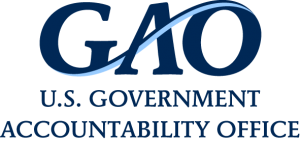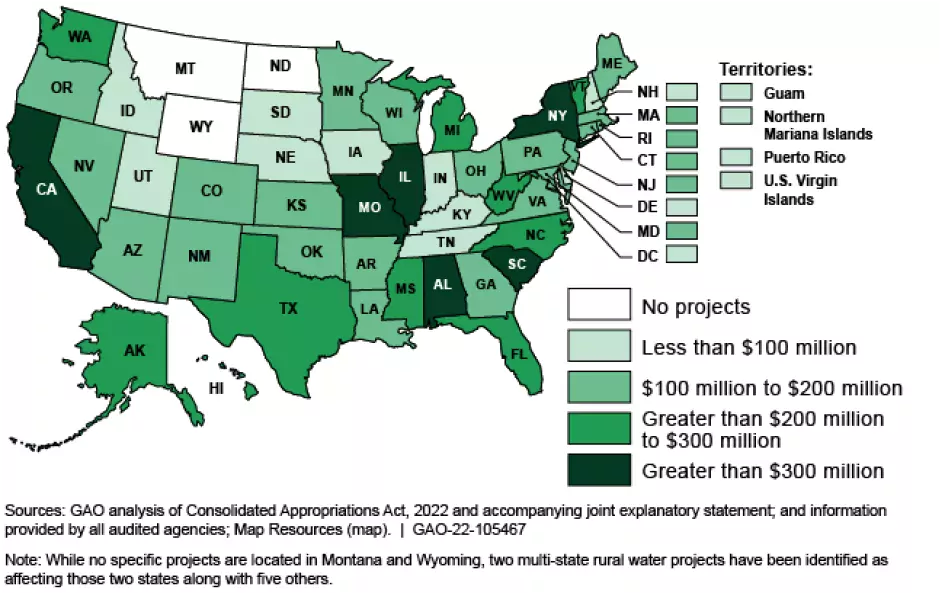As part of the Fiscal Year 2022 appropriations process, Members of Congress could request provisions, designating an amount of funds to a particular recipient—such as a local government or nonprofit organization—for a specific project. These provisions are called “Congressionally Directed Spending” in the U.S. Senate and “Community Project Funding” in the House of Representatives.

To help Congress oversee these funds, we are issuing a series of products looking at agencies’ plans for distributing and monitoring the funds. View Agency Reports
In addition, we plan to examine agencies’ progress in making funds available to recipients, recipients’ progress in spending these funds, and implementing selected projects.
The Consolidated Appropriations Act, 2022 included provisions for 18 federal agencies to make nearly $9.1 billion available to about 5,000 specific projects at congressional members’ requests. These requests could not exceed 1 percent of total discretionary funding. Member requests directed funds for specific projects that generally would otherwise have been left to agencies’ discretion.
FULL REPORT
gao-22-105899
The Consolidated Appropriations Act, 2022 included provisions for 18 federal agencies to make nearly $9.1 billion available to about 5,000 specific projects at congressional members’ requests. These requests could not exceed 1 percent of total discretionary funding. Member requests directed funds for specific projects that generally would otherwise have been left to agencies’ discretion.
What are the intended uses of these funds?
These funds cover a range of purposes. Specifically, across 18 agencies, the funds are designated for several broad purposes, or budget functions—broad categories into which all federal spending is placed. The largest categories include environmental projects, such as flood mitigation, and community development projects, like efforts to prevent homelessness and expand affordable housing.
Budget Functions of Funding Provisions in the Consolidated Appropriations Act, 2022

Who are the designated recipients?
Funds were designated for projects in 47 states, 4 U.S. territories, and the District of Columbia.
Funding Provisions in the Consolidated Appropriations Act, 2022 by Location

The Senate and House prohibited members from requesting funds directly for for-profit entities. In fiscal year 2022, about half of the designated recipients of these funds are tribal, state, local, or territorial governments. In some cases, these entities may distribute the funds in the future to subrecipients, such as nonprofits, to implement the projects. In other cases, a federal agency was designated to directly undertake projects, such as dam-building or river-dredging, in communities.
Funding Provisions in the Consolidated Appropriations Act, 2022, by Type of Recipient
|
Types of recipients |
Funding for provisions |
Number of provisions |
|
Federal Government |
$2,127,707,000 |
314 |
|
Tribal/State/Local/Territorial Government |
$4,142,941,310 |
2343 |
|
Higher Education Organizations |
$1,069,635,749 |
594 |
|
Other Nonprofit Organizations |
$1,724,116,089 |
1712 |
|
$9,064,400,148 |
4963 |
Availability of Funds
Congress generally appropriates budget authority to an agency for use during a specific period, referred to as the period of availability. Time-limited authority can be provided for one or multiple years, while some budget authority never expires.
For example, over 68 percent of the funds are available for agencies for obligation for a fixed period, ranging from 1 year to 5 years. After the fund’s period of availability expires, agencies generally have 5 years to fully disburse the funds. The remaining 32 percent of funds are not time limited, so the funds will be available for obligation until they are expended. In some instances, the timeline that agencies set for recipients to spend funds may be shorter than what is specified in law.

Source: GAO.GOV






